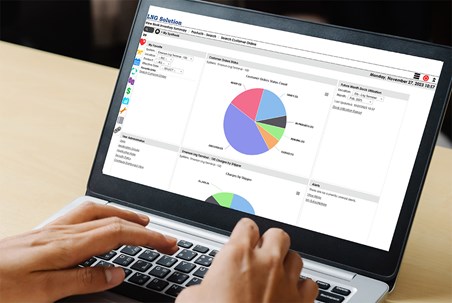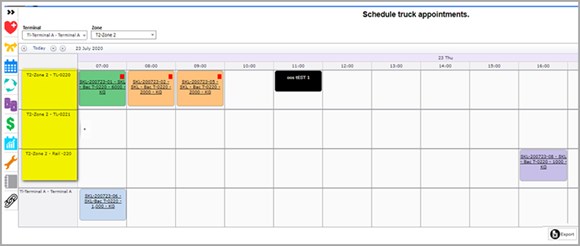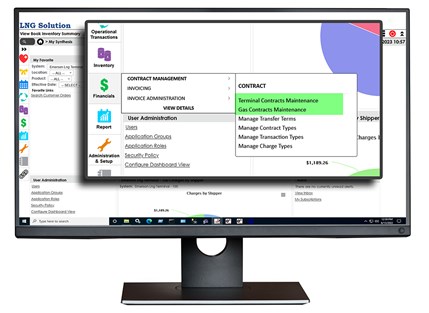Navigating the complex LNG value chain
R. AWASTHI and M. RENDON, Emerson, Houston, Texas
Throughout the last two decades, LNG technology improvements have built a global natural gas market. This globalization has led to an increase in demand, but also an increase in instability, as changing global events and the drive towards increased sustainability in energy sources have created market fluctuations from all directions.
As a result, LNG suppliers are under increasing pressure to operate as efficiently as possible to maintain a competitive advantage in an increasingly complex market. To accomplish this, terminal and pipeline operators must rethink the LNG value chain by optimizing operations to prioritize efficiency and precision, and to consistently deliver speed and quality, all to better meet the world’s growing energy demand.
One of the most challenging roadblocks to efficient, flexible operation is the complexity of the transition from pipeline operations to terminal operations, and vice versa. As gas is repeatedly liquefied and regasified, suppliers must carefully monitor their operations to ensure safety and quality as they simultaneously strive to meet varied regulations and manage reconciliation across the energy value chain.
Today, many of these operations are handled manually, which limits both efficiency and efficacy, and dramatically increases the risk of human error. Moreover, manual LNG operations limit an organization’s ability to maintain a holistic view of operations to achieve better performance and improve the overall customer experience, two key factors driving competitive advantage in tight markets.
However, complexity and inflexibility do not have to be the default. Instead, today’s most successful LNG providers are embracing a boundless automationa vision of operations, managing data seamlessly from the field to the edge and into the cloud. One of the key strategies supporting this trend is a move toward holistic, seamlessly integrated energy logistics software solutions that help operators visualize and manage the LNG value chain from end-to-end (FIG. 1).

FIG. 1. Pipeline and terminal operators are more easily navigating the complex LNG value chain by seamlessly managing gas and liquids data from end-to-end.
Complex operations struggle with siloed data. Consider an example of an organization running a terminal and a pipeline. When a vessel arrives in the terminal and starts unloading, it will likely move product into many tanks. The operations team will need visibility into how much product went into each tank, as well as how many different customers have ownership. They will also need to know the amount and quality of product already in the tank. The team also must reconcile what additional products arrived, the custody owner for each of those products, how much was paid for each and other information. All measurements, observables, gross calorific value and any other metrics that capture the energy content must be recorded and tracked in energy value (FIG. 2).

FIG. 2. The authors’ company’s softwarea provides greater visualization to improve the management and allocation of LNG inventory across both pipeline and terminal operations.
In many operations today, much of this data is entered manually into complex spreadsheets that were written years ago by a small group of experienced users. Those spreadsheets typically contain calculations and macros that automate some of the calculation and validation effort, but in most cases, those complex spreadsheets were designed for much simpler terminal operations.
Even in the best cases, they are difficult to use, and even more difficult to train new personnel to understand. Moreover, every manual entry on a spreadsheet creates the risk of human error, which in the worst case cascades across the macros and built-in calculations to wreak havoc on the terminal’s records, reports and audit trails. Even if the data is entirely correct, it is not easy to store or access later.
Transitions increase complexity. The lack of easy access to terminal data is even more of a problem when the operations team moves product from a terminal (or tanks) into pipelines. Before LNG can be moved from tanks into the pipeline, it must be regasified. As the regasification and transportation process occurs, the operations team must consider boil-off gas, liquid-to-gas conversion, LNG/natural gas allocation, the record of inventory and imbalance calculations to ensure that operations meet the terms of purchase, sales and transportation contracts. In many cases, those contractual records are siloed in their own electronic systems, where they must be located and cross-referenced with the spreadsheets teams are using to track product movements. These tasks dramatically reduce efficiency of operation.
Teams must also maintain precise awareness and recording of quality as LNG moves through the liquefication and regasification processes to meet U. S. Federal Energy Regulatory Commission (FERC) regulations and other regulations worldwide. When gas is moved from one point to another, contracts outline specific agreements regarding the gas quality that must be delivered to recipients.
Each step of the value chain introduces risks that will degrade quality, so teams must manage measured data so they can identify quality across every step of the process. If the data must be manually collected, recorded and calculated—either on spreadsheets or from multiple disconnected software systems—the resulting delivery delays and errors in audit trails could result in fines or cancellation of contracts.
In larger pipelines, operations and business teams must also carefully manage changing regulations as product crosses state or country lines. Teams may also need to manage variability between tax rates and various regulations in different areas.
Beyond the pipeline. Moving LNG back and forth from terminals to pipelines is complex enough, but most LNG providers must manage other operations, as well. Just bringing vessels into and out of the terminal requires the scheduling of dock events and calculation of demurrage. Moreover, many organizations operate truck and rail transportation of LNG, which also must be scheduled and managed, with product transfer data carefully recorded. When that data is spread across a wide variety of spreadsheets or across many disparate software systems, teams struggle to optimize operations (FIG. 3).

FIG. 3. Users efficiently schedule LNG truck loading operations with the authors’ company’s softwarea that streamlines management of incoming trucks.
Finally, when all operations are completed, teams must also manage reconciliation, both in the pipeline and the terminal. The organization must know that what is stored in the terminal is accurately reflected in what is recorded, and it must also ensure that it matches what is currently in tanks and pipelines. Once that process is completed, teams must generate reports to send to customers, pipeline owners, stakeholders and others, either periodically or on demand.
Holistic operation is built on seamless integration. To build a truly efficient LNG operation, teams need seamless integration among the software solutions that manage their processes. Today’s most effective organizations are choosing a holistic, seamlessly integrated ecosystem of operations management and transaction management software to better manage LNG operations across their terminal and pipeline networks.
Modern energy logistics software solutions are designed out of the box to connect, without the need for creating complex custom interfaces. With the best solutions, user movement between applications requires only a single click. In addition, both applications operate with a cohesive interface, and data moves freely between them, eliminating silos.
With integrated operations management and transaction management software, users can be trained on a single system and then easily manage operations across both liquid and gas stages in an LNG facility. The user simply logs into one application to navigate both gas and liquid contracts, manage daily and weekly nominations, and handle transportation logistics, such as vessel and truck orders. Reconciliation and reporting are automated, and commercialization is simplified. Modern solutions can communicate directly with order-to-cash systems to handle billing, invoicing and reporting to customers.
The best solutions will also assist with regulatory compliance out of the box. Modern software will be system and organization controls compliant to meet the highest levels of security, availability, confidentiality, system integrity and privacy. Using an integrated energy logistics software solution will also empower teams to operate more efficiently with embedded tools to help them meet local regulatory requirements as product crosses regions via pipeline, eliminating the need to track regulations manually.
Most importantly, integrated solutions break down data silos to manage quality to meet U.S. FERC and other regulations. As gas moves from one point to another across the value chain, measurement data is recorded and stored at every transition to confirm quality standards have been met and that data is automatically validated at every stage. Because the software can be integrated with business systems as well, teams have the option to automatically create customer reports (FIG. 4).

FIG. 4. Both gas and liquids contracts are managed synergistically within the authors’ company’s softwarea, which also seamlessly integrates with order-to-cash systems.
Reducing complexity today and in the future. Prevailing wisdom coupled with historical trends suggests that LNG operations will only increase in complexity in the coming years, while competition also increases. In such an environment, ever-increasing efficiency will be essential to meeting the needs of customers and capturing competitive advantages.
However, if an organization’s critical operational data is trapped in silos formed by spreadsheets and disparate software solutions, personnel will be unable to maintain the holistic visibility, operational activities and automation strategies necessary to unlock those efficiencies.
Fortunately, capturing efficiency and visibility across the LNG value chain is possible with modern technologies. Modern software solutions are easily integrated, breaking down silos and automating many of the most complex tasks in LNG operations. Building a foundation of integrated software solutions today is helping LNG operations of all sizes prepare for the future, whatever it may bring.
NOTE
a Emerson’s Boundless Automation™
ABOUT THE AUTHORS
Rohan Awasthi is a Product Manager of Emerson’s Synthesis Software. He has deep expertise in the commercial management of oil and gas pipelines and terminals. He brings 15 yr of experience to his current role, and his responsibilities include product feature design, along with product roadmaps and managing product release lifecycles. Awasthi earned an MS degree in chemical engineering from the Indian Institute of Technology in Kanpur, and an MBA degree from Rice University in Houston, Texas (U.S.).
Martha Rendon is a Senior Product Manager for Emerson’s Gas Management Solutions portfolio. She has more than 20 yr of industry experience, of which 15 yr have been in the energy sector, with a focus on globally deployed software projects, systems design and product roadmap management. Rendon is skilled in delivering complex solutions, and she consistently demonstrates a strong customer focus, keeping projects under budget and ahead of schedule. She is certified as a Project Management Professional (PMP) and for Business Design Thinking. She earned a Bachelor of Systems engineering computer science degree, and a Master of Organizational control business administration and management degree, both from EAFIT University in Medellín, Colombia.




Comments